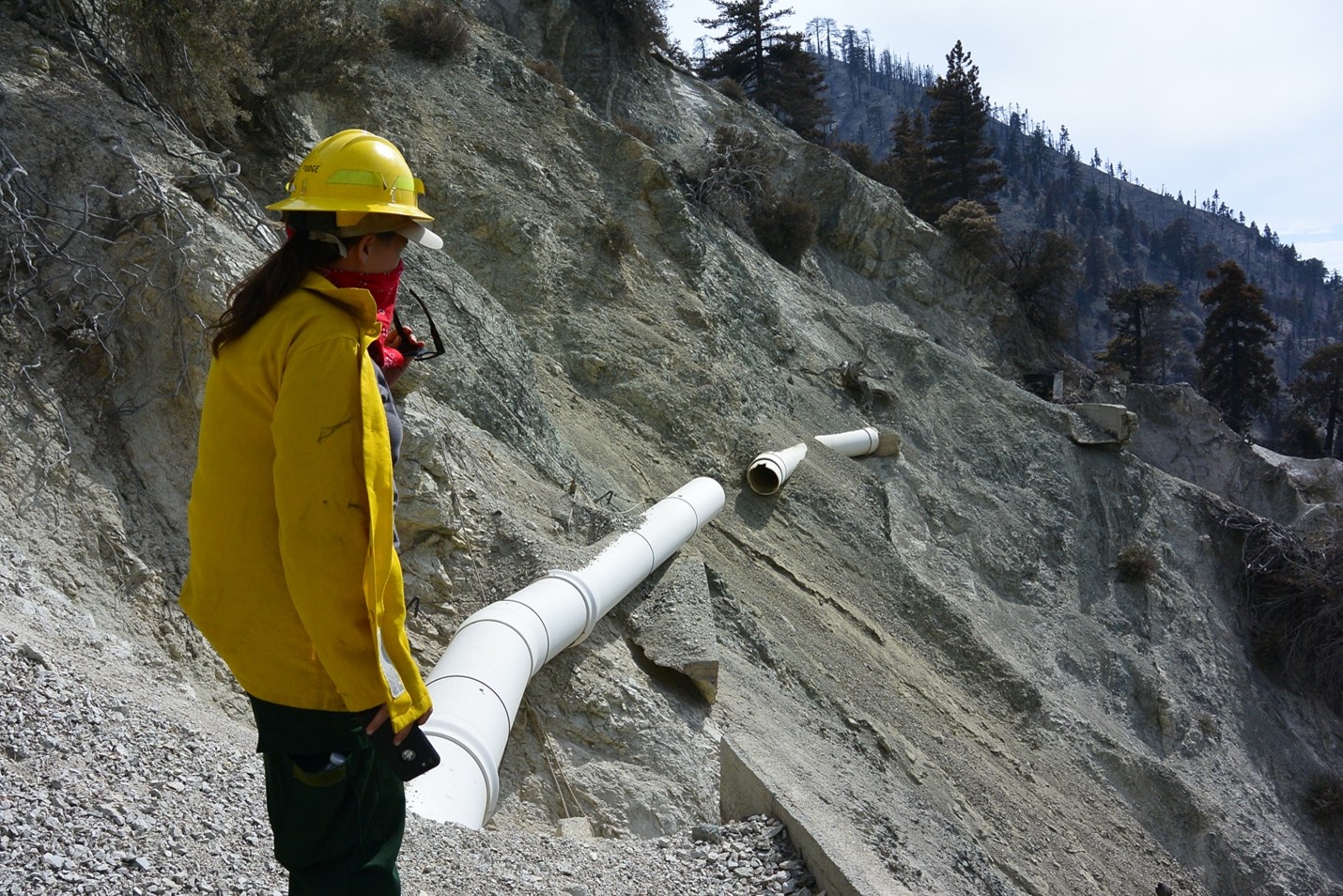CW3E Publication Notice
A warming climate adds complexity to post-fire hydrologic hazard planning
July 29, 2021
Nina Oakley, a research scientist with CW3E, recently published an invited commentary in the journal Earth’s Future. The commentary was written in response to Kean and Staley (2021), “Forecasting the Frequency and Magnitude of Postfire Debris Flows Across Southern California”, which demonstrates a method for estimating recurrence interval of post-fire debris flows. Kean and Staley (2021) also test the sensitivity of debris flow frequency and magnitude to possible future changes in fire behavior and rainfall intensity.
In this commentary article, Oakley expands on the concept of climate change and debris flow hazards addressed in Kean and Staley (2021) and describes weather and climate-related data and information needs to support planning for post-fire hydrologic hazards in a warming climate. Key points include:

A USFS Burned Area Emergency Responder evaluates the 2019 Apple Fire in Southern California for post-fire hydrologic hazards.
- Time between wildfire and the first instance of high-intensity rainfall may be relatively short, and potentially shorter in a warming climate, leaving little time for identification of hazard areas and implementation of mitigation strategies. Assessing the potential for post-fire hydrologic hazards and their impacts prior to wildfire occurrence can reduce some of the challenges associated with conducting a rapid post-fire response.
- There is uncertainty in the magnitude of sub-daily precipitation intensification, especially for the US West Coast cool season. Further research to understand atmospheric processes at play in sub-daily precipitation intensification along the West Coast and the magnitude of the change would provide insight to future post-fire debris flow frequency and magnitude, supporting long-range planning efforts.
- Developing “climate scaling factors” that can be applied to frameworks already in use for planning and design (e.g., NOAA Atlas 14) may be valuable for post-fire hazard planning. However, it is possible that scaling factors will vary based on storm characteristics.
- As post-fire hydrologic hazards are typically assessed at a “small catchment scale” (~a few km2) and their likelihood is best represented by rainfall intensities at sub-hourly durations, reanalysis products (simulations of past weather/climate) and climate projections that address these temporal and spatial scales are extremely valuable for assessing post-fire hydrologic hazards. Some challenges in accomplishing these efforts are noted.
- Field monitoring programs that include high temporal resolution rainfall measurements and debris flow response and timing (or lack thereof) are critical for calibration and further development of debris flow models.
- Existing operational weather radars have poor coverage in many areas of complex terrain in the West where post-fire debris flows present a hazard. Telemetered rain gauges deployed to burn areas of concern can provide support for “nowcasting” or forecast model verification, but only provide data at a point. Permanent installation or deployment of weather radars to fill gaps or provide additional information in areas of concern to support forecasting efforts.
This article addresses CW3E’s Strategic Plan Priority Area of Monitoring and Projections of Climate Variability and Change. It outlines some of the major weather and climate data and information needs to manage post-fire hydrologic hazards in a warming climate. Addressing these information needs will help to quantify the changing risk of post-fire hazards to support preparedness and planning.
Oakley, N.S. (2021). A warming climate adds complexity to post-fire hydrologic hazard planning. Earth’s Future, 9, e2021EF002149. https://doi.org/10.1029/2021EF002149
